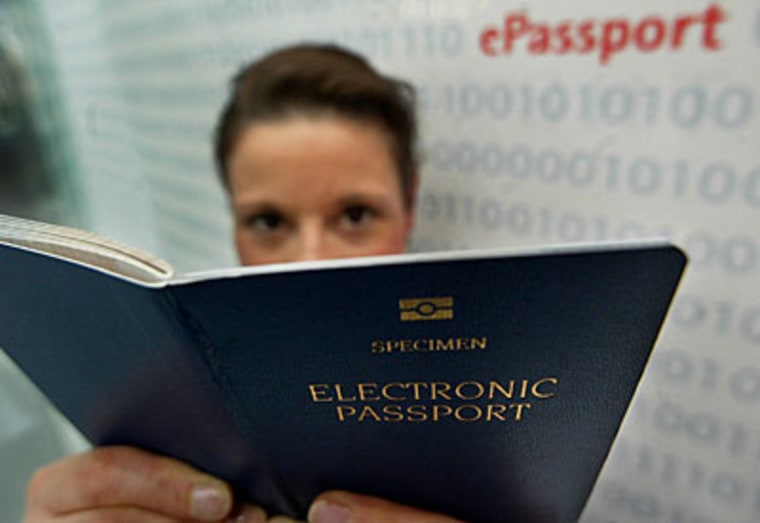Those little blue books are going high-tech.
Last August, the State Department started introducing passports embedded with computer chips. The "e-passports" are meant to prevent passport counterfeiting and tighten border control, and every U.S. passport holder is projected to have one by 2017.
But a vocal group of privacy lobbyists opposes them, saying the electronic data is poorly protected and renders U.S. citizens vulnerable to terrorist attacks and identity theft.
The e-passport works as follows: The chips contain the same information printed on the inner flap of your current document--name, place and date of birth, passport number, issue date and expiration date, plus a digital facial photo, the first biometric sample ever incorporated into official U.S. travel documents. All are digitally encrypted.
When a traveler approaches border control, officials unlock the information on the chip with specialized radio frequency identification (RFID) readers. After ensuring that the electronic information matches that printed in plain old ink in the passport and that your mug matches both photos, officials stamp your passport and send you on your way. Sounds simple--and safe--enough.
"The e-passport is probably the most secure document we've ever issued," says Ann Barrett, acting deputy assistant secretary for passport services in the Bureau of Consular Affairs at the U.S. State Department.

But others aren't so sure. Barry Steinhardt, director of the Technology and Liberty Project at the American Civil Liberties Union argues that because RFID readers are easy to find and pay for--a quick online search reveals a wide array for sale starting at around $600--anyone can skim information off the passport of a passerby and exploit it to plan identity theft or high-profile kidnappings.
"The RFID chip can and will be compromised," Steinhardt says. "It can be read remotely and cloned, and is therefore a honey pot for identity thieves and terrorists. Do you really want to be traveling through Amman, Jordan, with a passport that identifies you as an American?"
Barrett points out that a variety of security features, from a metallic anti-skimming shield in the passport cover, to basic access control, which restricts the readers the chip will communicate with, have "mitigated the circumstances in which people can access the information. And even if they could, it's not data we consider sensitive, such as address or social security number," she continues. "This book is the next generation of security."
Safe or not, the e-passport could be a windfall for security firms and their investors. The Washington-based Homeland Security Research Corporation projects that the global homeland security and homeland defense market will triple by 2015 to almost $180 billion. Biometrics is expected to play a significant role in that growing market.
Joel Shaw should know. Shaw convened the committee to develop the e-passport, a collaboration between the International Civil Aviation Organization, a Montreal-based body of the United Nations, and the International Standards Organization, a Geneva-based organization that coordinates the development and implementation of standards across a variety of industries.
The e-passport is on its way to becoming a global travel requirement--the U.S. issued an Oct. 26 deadline for the 27 European Union and other visa-waiver countries to prepare the technology to issue e-passports to their citizens. If they miss the deadline, foreign citizens who could once travel to the U.S. visa-free might now be required to apply for documents. Exclusion from the U.S. is a hefty price to pay, so the tech companies that can design and produce the technology to create, secure and read these passports at hundreds of airports in dozens of countries will be well-positioned.
"The profit opportunity is substantial," Shaw says.
Conveniently, Shaw is also chief strategy officer of Tuckahoe, N.Y.-based Cryptometrics, a private security technology company that specializes in providing facial biometric solutions to border security.
Cryptometrics has signed a contract to provide New Zealand with e-passport technology and is pursuing deals with other countries as well. Shaw won't reveal what the deal was worth, except to say that each one varies "from a few thousand dollars to several million." Cryptometrics is currently working on 50 or 60 such deals; in other words, the e-passport could make Shaw not just safer but much, much richer.
About 70 million Americans, or one quarter of the country, have passports. And while the new e-passports won't make the rest of us richer, they won't make us substantially poorer, either--the current cost for an adult passport, $97, hasn't been affected by the new technology (the last passport price increase, $12, was added in February 2006 to cover database sharing technology).
Here's hoping they at least make us safer.
